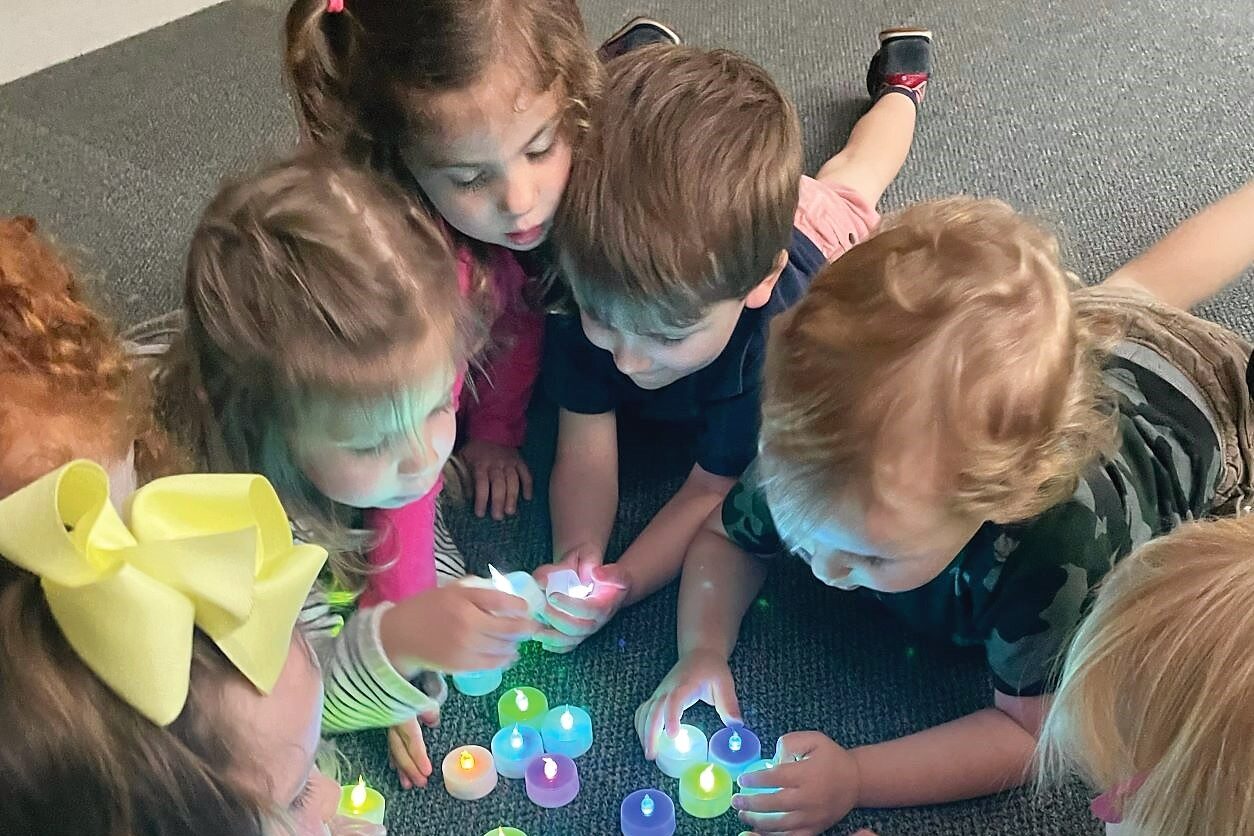A Preschool’s Lessons for Everyone
A Preschool’s Lessons for Everyone
Excerpt from Sacred Spaces, Innovative Places with permission from the Cooperative Baptist Fellowship.
“River Road Church, Baptist” occupies a serene hilltop minutes away from the University of Richmond. Inside the church’s preschool, however, serenity gives way to classrooms brimming with activity.
The River Road Preschool Development Center currently serves about 180 students and operates a standard half-day program that can be extended for convenience and tailored to each family’s needs. The Center’s director, Danielle Simone, brought needed changes to the preschool and led efforts to “blur the lines” between preschool and church.
Church preschools are perhaps one of the most common ways to make use of spaces that otherwise sit empty for most of the week. Many churches have preschools that are in high demand because of their location and/or reputation in the community, but preschools often present their own set of challenges such as extra maintenance costs. Preschools can also pose a financial challenge as enrollment fluctuates from one year to the next. Many preschools see a balance sheet that is break-even at best, so the church must be willing to absorb costs associated with an operating loss and invest in the upkeep of the preschool area. The preschool model at River Road is not only self-sustaining but also provides some financial benefit to the church, which makes it extremely rare.
ENGAGING ENRICHMENTS PROVIDE AN ATTRACTIVE MODEL
The River Road Preschool Development Center operates its primary schedule from 9a.m. until noon. But, Danielle says that periodically surveying parents has tremendously helped in providing additional services to meet needs of those families enrolled in the school.
Flexibility is the key, she says, in appealing to the schedules of those who attend the school. Early care begins at 7:30 a.m. and extended care is offered until 4 p.m., as well as “lunch bunch” and afternoon enrichments that change every 6-8 weeks.
Enrichments are seasonal and often feature outside vendors who come to the preschool to provide classes and recreational opportunities for the children. These include academic offerings as well as classes such as dance, soccer and martial arts. The add-ons to the half-day program make the preschool a one-stop shop in terms of managing the child’s day.
The preschool also offers six weeks of camps throughout the summer which include extended care offerings, except for the week of Vacation Bible School at the church. Children from the school are encouraged to attend Vacation Bible School so as not to compete with the church’s ministry. The students and families also contribute to the ministry of the church with two fundraisers each year that benefit the Fellowship Fund, which offers monetary assistance to families and individuals.
Because of the profit the preschool makes from this model, they are able to give back to the church as a way of offsetting the cost of operating rent-free. In a previous era, the preschool gave a set portion to the church, but under Danielle’s leadership, the contribution from the preschool has been more generous. The funds contributed by the preschool bless the congregation by assisting with ministry programs as well as offsetting the cost of utilities and custodial staff.
CONSIDERATIONS FOR A MORE ADAPTIVE CHURCH SCHOOL MODEL
The River Road Preschool Development Center didn’t employ an effective model of offering extended care and enrichments overnight. It has taken strategic communication and a delicate balancing act when it comes to logistics and staffing.
When asked for her best piece of advice when it comes to a more a la carte model of preschool operations, Danielle said, “Start small, and do it well.” She added, “Evaluation is key, and knowing the cost of every seat in the school is very important in determining tuition and related fees.”
When it comes to the relationship with the church, both Daniel and Danielle agree that, like all relationships, it takes intentionality and communication. But it’s worth the effort if the church and school become more collaborative and less insular. When churches and their schools can share events, spaces, and their mission, stewarding their resources looks less like a business and more like the Body of Christ.
This story is part of Lake Institute’s story collection, the Faithful Generosity Story Shelf, which highlights congregations and other religious organizations who have sought to use their assets and resources in creative—and sometimes surprising—ways as an expression of faithful giving.
Each entry in our Story Shelf is short enough to be read and discussed during a committee meeting or other group gathering. Our hope is that these accessible vignettes will spark new questions, conversation, and imagination among clergy and laity about what might be possible with the funds, buildings, land, and other resources in their care. If you know a story that should be included in the Story Shelf, suggest it here.
Subscribe
Insights is a bi-weekly e-newsletter for the religious community and fundraisers of faith-based organizations that provides:
- Reflections on important developments in the field of faith and giving
- Recommended books, studies and articles
- Upcoming Lake Institute events

